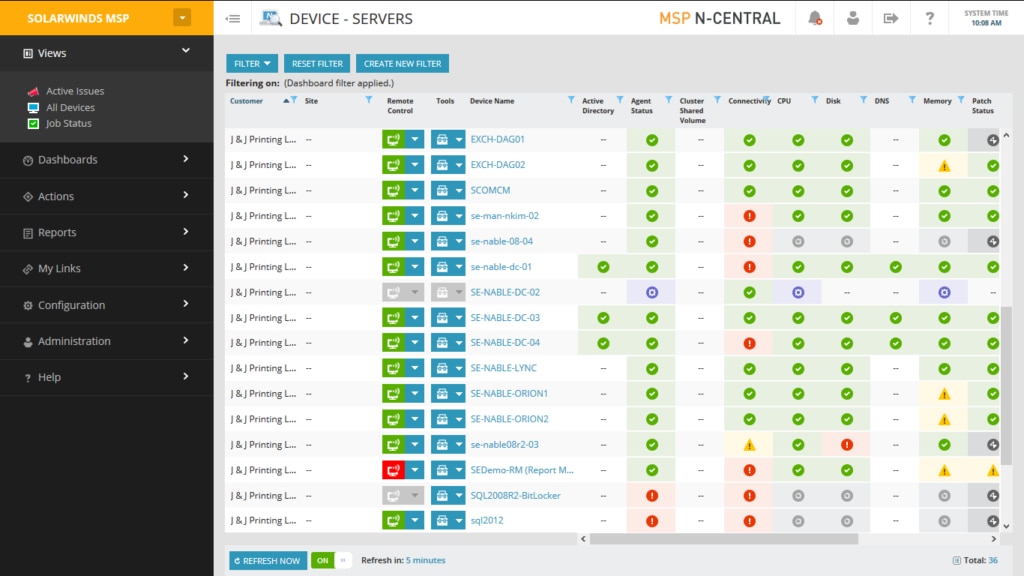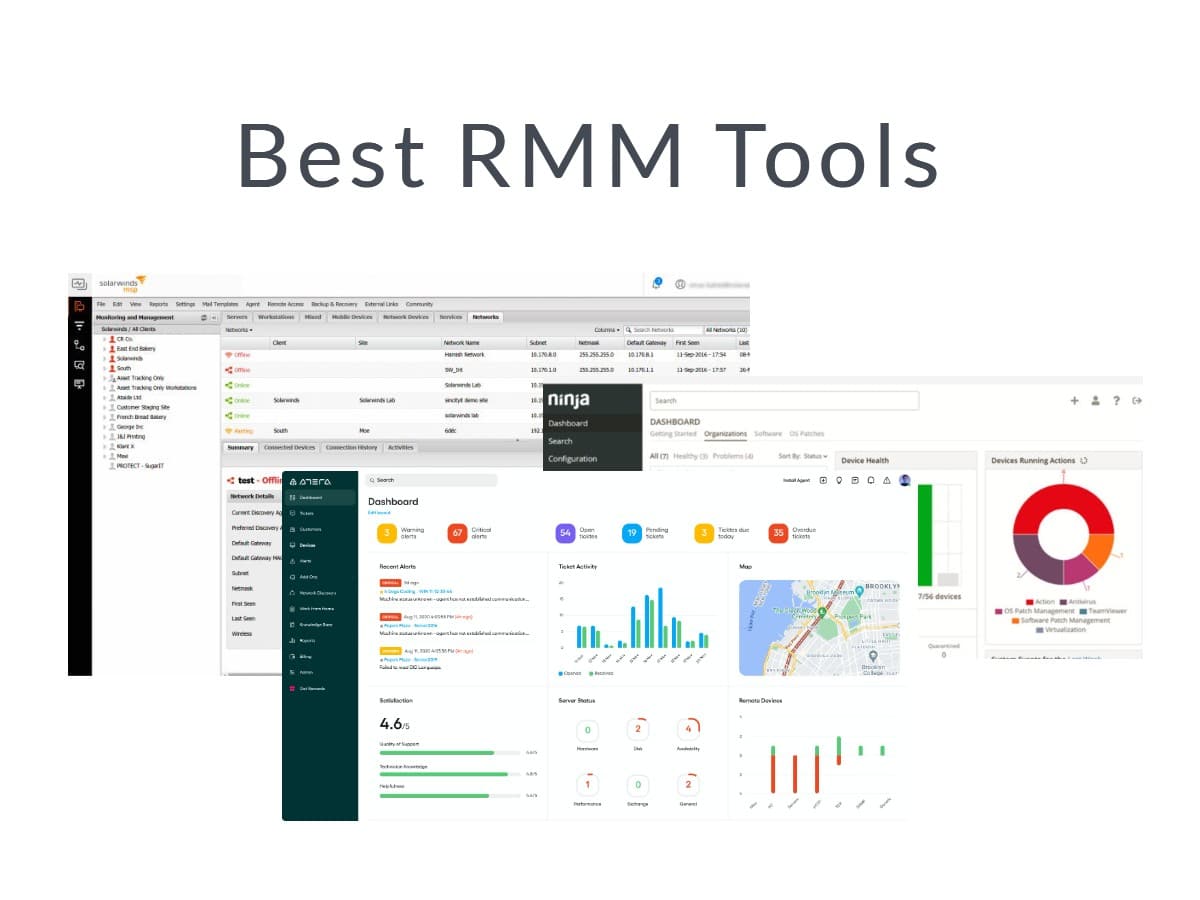Easy RMM represents a paradigm shift in IT management, empowering businesses of all sizes to streamline their operations and achieve greater efficiency. By automating routine tasks and providing intuitive interfaces, easy RMM solutions break down the barriers to effective IT management, making it accessible even to those without extensive technical expertise.
Table of Contents
Imagine a world where your IT infrastructure runs smoothly, security vulnerabilities are automatically patched, and issues are resolved before they impact your business. This is the promise of easy RMM, a technology that transforms complex IT tasks into manageable processes, freeing up your time and resources for strategic initiatives.
Key Features of an Easy RMM

An Easy RMM (Remote Monitoring and Management) solution simplifies IT management tasks for businesses of all sizes. It provides a centralized platform to monitor and manage endpoints, automate tasks, and ensure the smooth operation of your IT infrastructure.
Essential Features of an Easy RMM
Easy RMM solutions offer a range of features designed to streamline IT management and enhance efficiency. Here are some key features:
| Feature | Description | Benefits | Examples |
|---|---|---|---|
| Automated Patching | Automatically identifies and installs updates for operating systems, applications, and security software on managed devices. | Reduces security vulnerabilities, minimizes downtime, and improves system stability. | Automatically patching Windows updates, Adobe Reader updates, and antivirus software updates. |
| Endpoint Management | Provides a centralized platform to manage and control endpoints, including computers, servers, and mobile devices. | Improves visibility into device status, simplifies software deployment, and enables remote configuration changes. | Deploying software updates to all endpoints, remotely configuring security settings, and monitoring device performance. |
| Remote Access | Enables secure remote access to managed devices, allowing IT professionals to troubleshoot issues and provide support remotely. | Reduces travel time and costs, improves response times, and allows for immediate assistance to users. | Remotely accessing a user’s computer to fix a software issue, providing technical support over the phone, and remotely controlling a server for maintenance. |
| Reporting | Generates detailed reports on various aspects of IT infrastructure, such as device inventory, software usage, security events, and performance metrics. | Provides insights into IT operations, identifies trends, and supports decision-making. | Generating a report on the number of devices in the network, tracking software license usage, analyzing security threats, and monitoring system performance. |
| Alerting | Provides real-time alerts for critical events, such as system failures, security breaches, and software updates. | Proactively identifies and addresses issues, minimizes downtime, and improves security posture. | Alerting on a server outage, notifying about a security threat, and informing about pending software updates. |
Implementation and Integration

Implementing an easy RMM solution can significantly enhance your IT infrastructure management. It requires a strategic approach to ensure seamless integration with existing systems and processes. This section Artikels the steps involved in implementing an easy RMM solution and provides tips for successful integration.
Integration with Existing IT Systems and Processes, Easy rmm
Integrating an easy RMM solution with your existing IT systems and processes is crucial for maximizing its benefits. It involves connecting the RMM platform with your existing infrastructure, such as Active Directory, ticketing systems, and monitoring tools. This integration enables automated workflows, data sharing, and centralized management.
- Identify Existing Systems and Processes: Begin by creating a comprehensive inventory of your current IT systems and processes. This includes your network infrastructure, hardware, software, user accounts, and any existing IT management tools. Understanding your current setup is essential for determining how the RMM solution will integrate.
- Assess Integration Capabilities: Evaluate the integration capabilities of the chosen RMM solution. Look for features that allow seamless integration with your existing systems, such as APIs, connectors, and pre-built integrations. This assessment ensures compatibility and avoids potential compatibility issues.
- Develop Integration Strategies: Based on the identified systems and assessed integration capabilities, develop specific integration strategies. This may involve creating custom scripts, configuring APIs, or utilizing pre-built connectors. Each integration strategy should be tailored to your specific needs and ensure data flow and automation between the RMM solution and your existing systems.
- Test and Optimize Integrations: Thoroughly test the integrations after implementation to ensure they function correctly and meet your requirements. Monitor data flow, identify any potential bottlenecks, and optimize integration processes for maximum efficiency.
Onboarding Users and Training
Effective onboarding and training are essential for maximizing user adoption and utilization of the RMM platform. A well-structured onboarding process guides users through the platform’s features and functionality, while training equips them with the necessary skills to use it effectively.
- Develop a User Onboarding Plan: Create a structured onboarding plan that guides new users through the RMM platform. This plan should include a welcome message, a guided tour of the platform’s key features, and access to relevant resources, such as user manuals and FAQs. The onboarding plan should be tailored to different user roles and responsibilities.
- Provide Comprehensive Training: Offer comprehensive training sessions to equip users with the necessary skills to use the RMM platform effectively. These sessions should cover key functionalities, best practices, and troubleshooting techniques. Consider different training formats, such as live webinars, recorded tutorials, and interactive exercises, to cater to diverse learning styles.
- Offer Ongoing Support: Provide ongoing support to users after the initial onboarding and training. This could include a dedicated help desk, online forums, or regular knowledge-sharing sessions. Continuous support ensures users can effectively utilize the platform and address any challenges they may encounter.
- Encourage User Feedback: Encourage users to provide feedback on their experience with the RMM platform. This feedback can be used to identify areas for improvement, enhance the platform’s usability, and address any user concerns.
End of Discussion

The adoption of easy RMM solutions marks a significant evolution in IT management, ushering in an era of simplified operations and enhanced efficiency. By embracing these user-friendly tools, businesses can unlock the full potential of their IT infrastructure, ensuring optimal performance, robust security, and cost-effective operations. As technology continues to advance, the future of easy RMM promises even greater automation, intelligent insights, and seamless integration, further empowering organizations to navigate the complexities of the digital landscape with confidence.
Finding the right remote monitoring and management (RMM) solution can be a bit of a challenge, especially if you’re looking for something easy to use. Macrium, a popular choice for imaging and backup solutions, macrium is a great option for those who need a reliable backup solution.
While Macrium isn’t specifically an RMM tool, it can be a valuable addition to your overall IT strategy, especially when paired with a user-friendly RMM platform.
